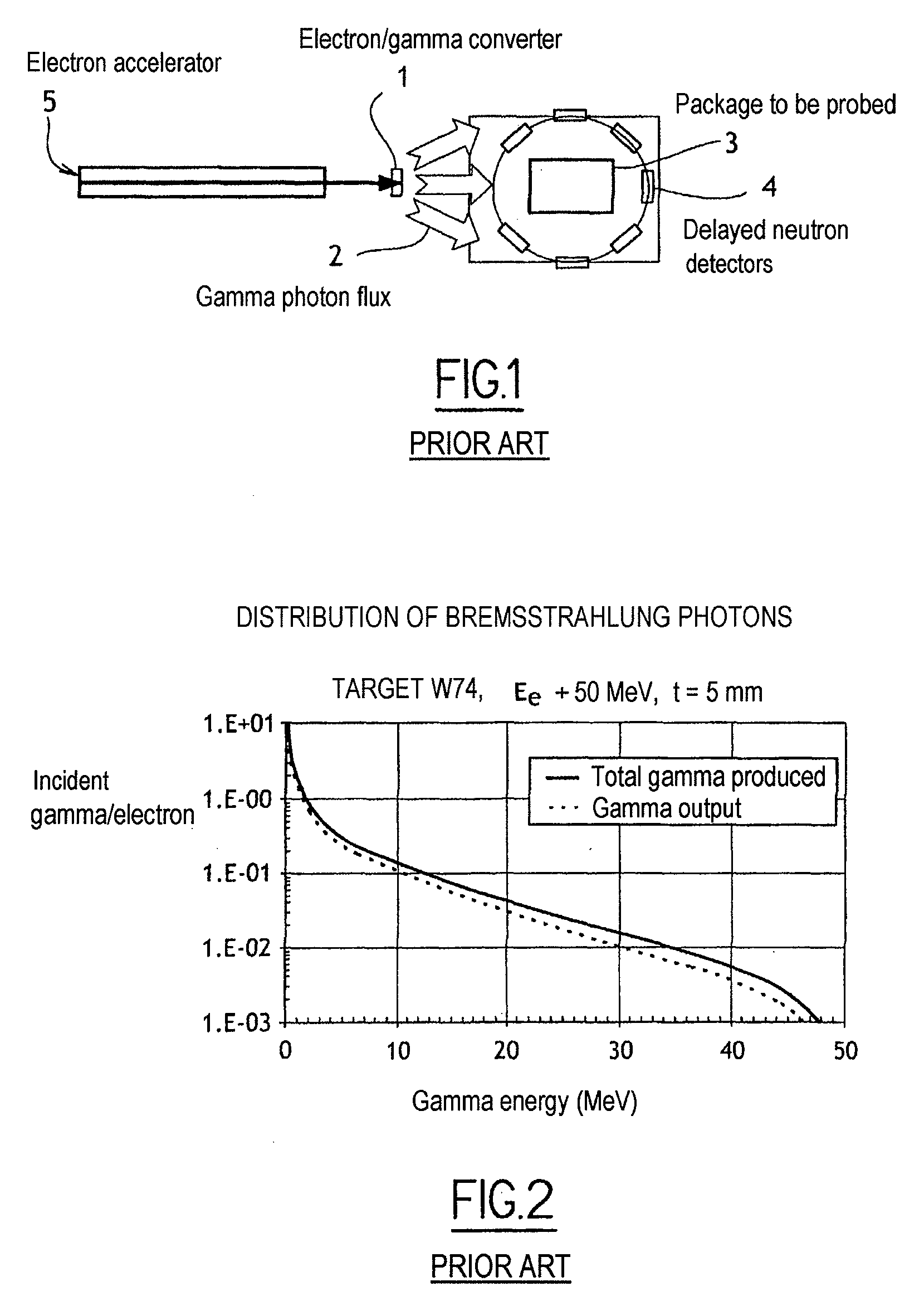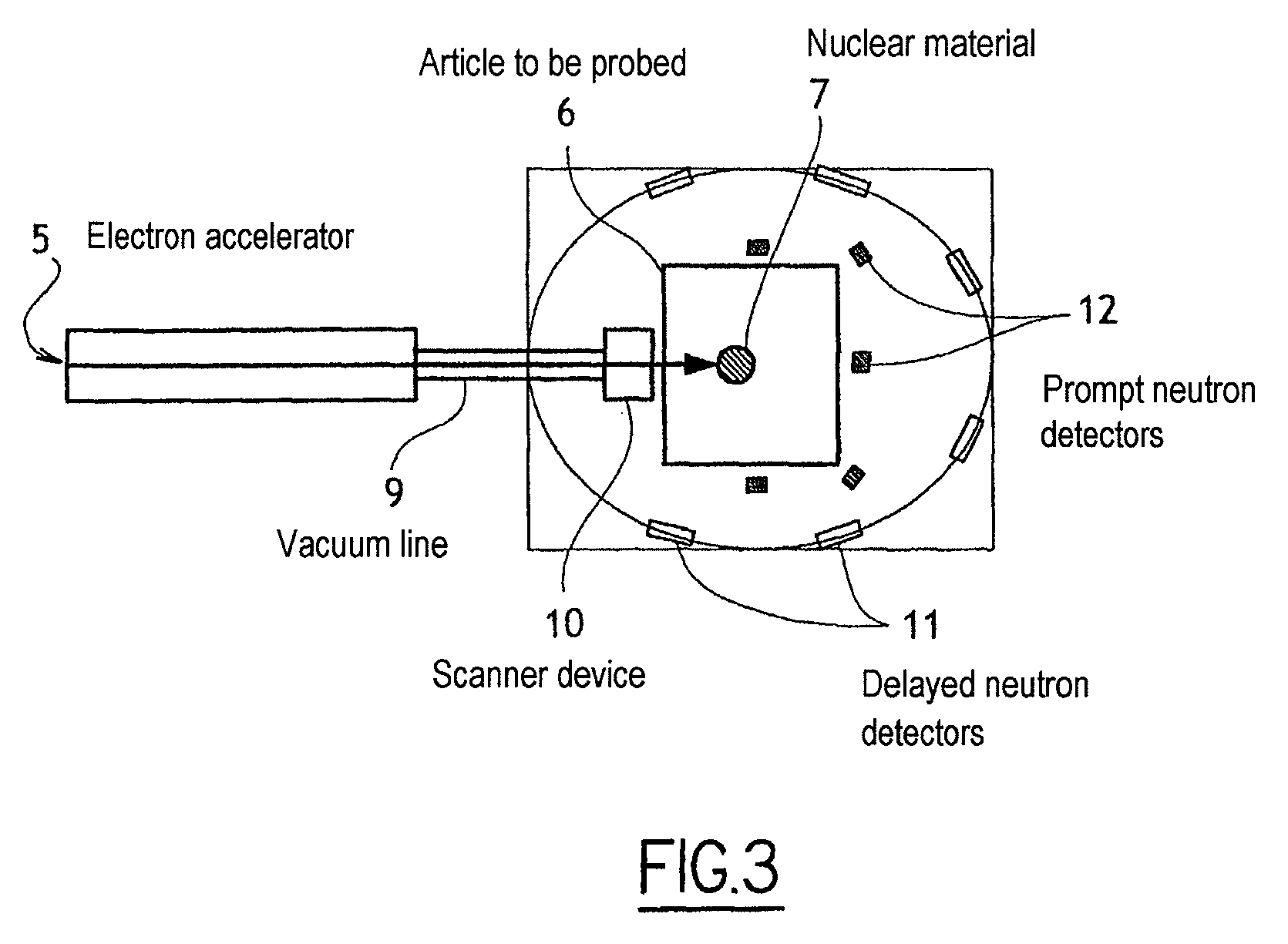Method And Apparatus For Probing Nuclear Material By Photofission
- Summary
- Abstract
- Description
- Claims
- Application Information
AI Technical Summary
Benefits of technology
Problems solved by technology
Method used
Image
Examples
Embodiment Construction
[0066]Although the invention is not limited thereto, the description below relates to an embodiment suitable for characterizing waste of small size inside a package of large size.
[0067]In FIG. 3, there can be seen an article 6 for probing that is of large size and that contains a very small quantity of nuclear material 7, an actinide. This material 7 is located at a specific point within the article 6. There can be seen an electron accelerator 8 serving to emit an electron beam 13 in pulsed form for striking the nuclear material 7. This beam 13 is transported by an evacuated line 9 constituted by an evacuated tube connecting the outlet from the accelerator 8 to the article 6 for probing. Nevertheless, in order to be able to scan the electron beam 13, a scanner device 10 based on magnetic deflector elements is installed (techniques that are well known in the field of accelerators) and controlled by a processor unit (not shown) for accurate localization of the nuclear material 7 in th...
PUM
 Login to View More
Login to View More Abstract
Description
Claims
Application Information
 Login to View More
Login to View More - R&D
- Intellectual Property
- Life Sciences
- Materials
- Tech Scout
- Unparalleled Data Quality
- Higher Quality Content
- 60% Fewer Hallucinations
Browse by: Latest US Patents, China's latest patents, Technical Efficacy Thesaurus, Application Domain, Technology Topic, Popular Technical Reports.
© 2025 PatSnap. All rights reserved.Legal|Privacy policy|Modern Slavery Act Transparency Statement|Sitemap|About US| Contact US: help@patsnap.com



